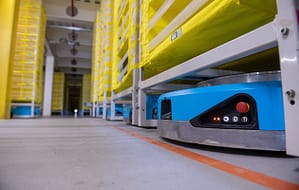The Royal Ballet School empowers dancers to take control of their well-being by preparing them for the physical and mental demands of a ballet career.
Dancers from around the world come to London to train at The Royal Ballet School, one of the most highly sought-after dance schools available. The school is particularly well known for its Healthy Dancer Programme, which it offers as part of its commitment to ensuring excellence in classical ballet training.
The Healthy Dancer Programme:
- Invests in each student’s long-term physical, emotional, and mental health.
- Is indicative of the school’s dedication to shaping strong, resilient, healthy dancers.
- Enhances performance through onsite healthcare support and research.
- Supports dancers from age 11–19, covering some of the most pivotal years of their training.
Here, we’ll explore what the Healthy Dancer Programme entails and how it empowers students.
The healthy dancer programme team
Over 20 healthcare professionals form the Healthy Dancer Programme’s dedicated team. These professionals include a healthcare manager, a clinical psychologist, counsellors, rehabilitation ballet instructors, physiotherapists, performance nutritionists, sports physicians, strength and conditioning coaches, school nurses, and Pilates instructors. This team collaborates with the school’s artistic, academic, and pastoral teams to offer a holistic approach to ballet training.
Health screening and ongoing research
All students undergo termly profiling exercises and screening to collate research data and craft individual conditioning programmes that support each dancer in their training. Students can visualise this data in the school’s wellness app, where staff record students’ health every day. Staff record everything from hydration and training load to anxiety levels and hours of sleep, building a unique profile for each student and creating a body of research that informs the school’s artistic programme.
The Royal Ballet School uses a research database called Smartabase, which both The Royal Ballet and Birmingham Royal Ballet also use. This means that the three organisations can collaborate, sharing research to create invaluable insights that inform expertise for the wider dance community.
The Royal Ballet School also generates research for its Healthy Dancer Programme through its resident PhD in Sports Science. The residency place focuses on understanding dancers’ needs, helping the school offer optimal support for students. Plus, the school works with reputable institutions like St Mary’s University, Twickenham, and Queen Mary University of London to improve research pertaining to dance in the sports sciences.
English institute of sport partnership
The Royal Ballet School has also formed a new partnership with the English Institute of Sport (EIS), which provides the school with advanced nutrition support to help students maintain healthy diets. The partnership has improved the school’s access to the EIS’ wide-ranging network of nutritionists, and a nutritionist now works with students and the school’s catering team two days a week. Plus, the school can access the EIS’ wider working groups, allowing staff and students to explore topics like eating disorders and menstrual dysfunction. Understanding and addressing these challenges is essential in all sports, particularly in aesthetic art forms.
Protecting mental well-being
The Healthy Dancer Programme pays special attention to students’ psychological well-being. A clinical psychologist mental health and safeguarding lead oversees the school’s mental health provisions, and the school’s counsellors make every effort to protect students’ emotional health through regular check-ins and an internal reporting system. These counsellors specialise in performance psychology (the psychological factors that influence human performance). This is ideal for dancers, who must tackle the demands of spectator expectation and compete for roles. The mental health aspect of the programme is also essential to support students as they develop into young adults and live away from home.
The cost of the healthy dancer programme
Such an advanced healthcare programme does come at a price, totalling at over £3,325 per student, per year. This makes up approximately 10 percent of the annual cost of a dancer’s training and education. Nonetheless, young dancers in training need to protect their physical and emotional well-being. The Healthy Dancer Programme underpins the physical, mental, and emotional training of young dancers so they can achieve successful careers in classical ballet and reach their artistic potential.
Admission to the school is based purely on candidates’ talent; personal circumstances have no bearing on entry. As a result, 84 percent of the current students receive financial support to attend the school. The Healthy Dancer Programme is generously underwritten by one of the school’s governors and supported by several other individuals and trusts, making the programme available to students throughout the school.
Learn more about The Royal Ballet School’s Healthy Dancer Programme.
The Royal Ballet School’s student facilities
The Royal Ballet School provides state-of-the-art facilities so students can live and train in outstanding environments. The school divides these facilities predominantly between two sites: White Lodge, the former Royal hunting lodge in Richmond Park, and Upper School, which sits opposite the Royal Opera House in Covent Garden. While students aged 11–16 live in White Lodge, students aged 16–19 live in Covent Garden (or in the school’s new boarding house in Pimlico).
White Lodge
White Lodge is home to The Royal Ballet School’s younger students. Since the school opened the Lodge to students in 1955, it has continuously developed the Lodge’s facilities to offer modern equipment and resources. The most recent upgrade was a £22 million redevelopment, which was completed in 2009. This redevelopment involved two new dance studios, the extension of a third studio, ergonomic accommodation for 126 students, a new dining hall, and major works to the 300-year-old building.
Today, White Lodge offers six studios, including the Fonteyn Studio Theatre (named after the renowned alumna Margot Fonteyn). This studio converts from a large studio into two smaller ones and into a fully equipped theatre that seats 250. Students also have access to an indoor heated swimming pool; tennis and netball courts; football pitch; and common room with darts, snooker, table tennis, television, and video games.
Upper school
Meanwhile, a spectacular bridge joins Upper School to The Royal Ballet at the fourth-floor level. Upper School offers six air-conditioned studios, one of which doubles as a performance studio with retractable seating for 180. Upper School also features changing and shower rooms; a healthcare suite with a gym, a Pilates studio, and a physiotherapy treatment space; a student common room; and an education suite.
The education suite comprises classrooms, up-to-date computer equipment, an art studio, and an audio-visual suite. These facilities have been placed on the fourth floor to take advantage of the natural daylight. All studios link to the audio-visual suite so that staff and students can record classes and rehearsals. This way, they can evaluate students’ dance techniques and enhance performance quality.
More about The Royal Ballet School
The Royal Ballet School has cultivated generations of exceptional classically trained dancers. These dancers go on to perform for The Royal Ballet, The Birmingham Royal Ballet, and other global dance companies. The school’s carefully structured eight-year course provides students with a holistic education that combines high-level ballet training with a strong academic curriculum.
Young dancers cover all elements of training when they start school at age 11, learning contemporary, character, and English folk dance to complement their classical curriculum. Learning different styles of dance gives students a wider repertoire, supporting their classical training. Female students begin pointe work from year seven, working on this increasingly over the years as their feet and ankles strengthen. On the other hand, male students in years 10 and 11 partake in body conditioning sessions to improve their core stability, which helps them meet the demands of pas de deux. Students emerge from the school as fully fledged, outstanding ballet dancers.






Leave a Comment